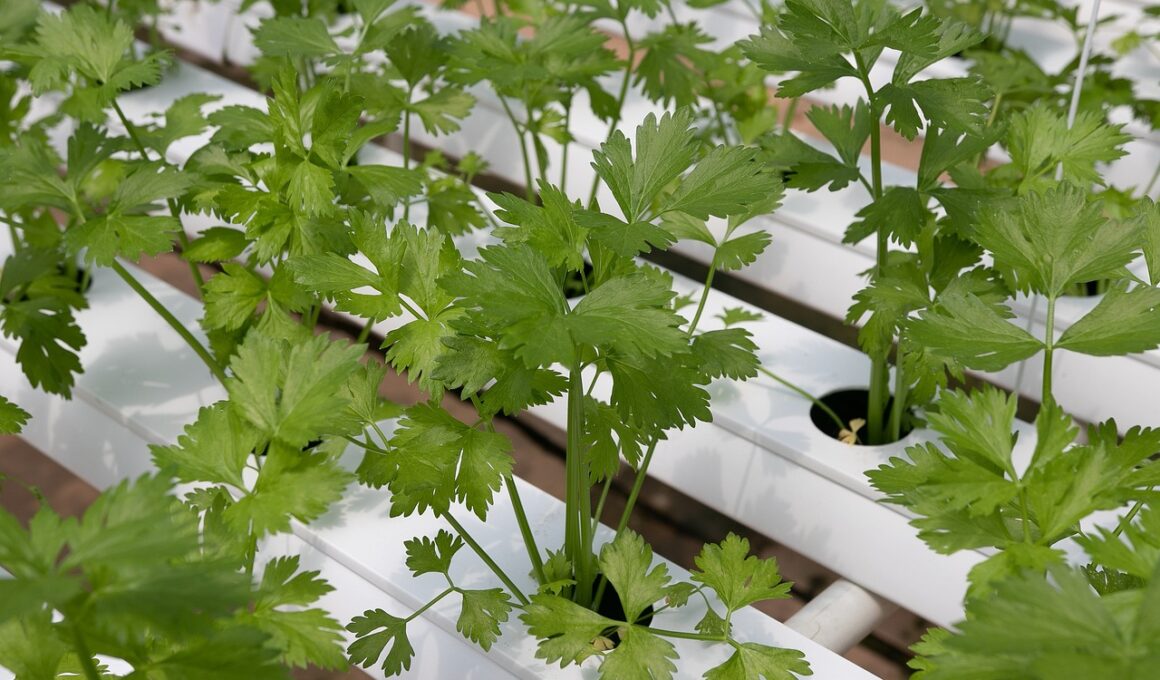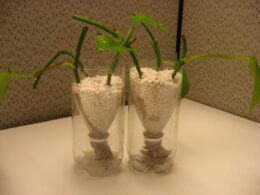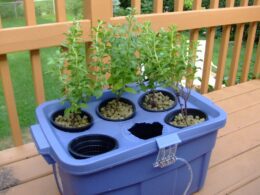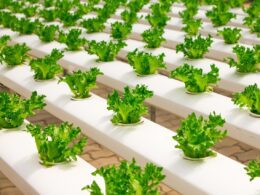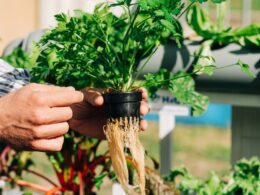Do you want to try your hand at hydroponics but worry that your plants might grow slower than they would in soil? It’s a common concern, but the truth is, it’s not that simple.
Hydroponics is a method of growing plants without soil, using nutrient-rich solutions instead. It has gained popularity in recent years due to its potential for higher yields and more efficient use of resources. But does it come at the cost of slower plant growth?
The answer is, it depends. Hydroponics can provide ideal growing conditions for plants, with precise control over temperature, humidity, and nutrients. However, certain factors can affect plant growth in hydroponics, such as the type of system used, the quality of the nutrient solution, and the plant species being grown.
In this article, we will explore the factors that can affect plant growth in hydroponics, review studies on the topic, and weigh the benefits and drawbacks of this growing method. By the end, you will have a better understanding of whether or not plants grow slower in hydroponics and how to maximize their growth potential.
Understanding Hydroponics
Discover the amazing world of hydroponics and the limitless potential it offers for faster, healthier, and more sustainable plant growth. Hydroponics is the practice of growing plants in a nutrient-rich water solution instead of soil. This method has been proven to provide faster growth rates, higher yields, and better quality produce than traditional soil-based agriculture.
One of the benefits of hydroponics is that it allows for better control over the growing environment. With hydroponics, you can adjust the water, light, and nutrient levels to meet the specific needs of each plant. This precise control over the growing environment means that you can grow plants faster and more efficiently, without the challenges of pests, disease, and other soil-borne issues.
There are several types of hydroponic systems, including deep water culture, nutrient film technique, aeroponics, and more. Each of these systems has its own benefits and challenges, but they all share the common thread of providing a nutrient-rich water solution for plant growth.
With hydroponics, you can grow plants year-round, in any location, without the need for soil or traditional agricultural practices. So, if you’re looking for a more sustainable and efficient way to grow plants, hydroponics may be the answer you’ve been searching for.
Factors Affecting Plant Growth in Hydroponics
When growing plants in hydroponics, there are several factors that can affect their growth. One of the most important is nutrient availability, as plants rely on specific nutrients to thrive.
pH levels also play a crucial role, as plants have different requirements based on their species.
Additionally, temperature and humidity can impact plant growth, as they affect the rate of photosynthesis and water uptake.
By understanding these factors, you can create an optimal environment for your plants to grow and thrive in hydroponics.
Nutrient Availability
You’ll be amazed at how much difference the right nutrient availability can make in the growth of your hydroponic greenery. Plants grown in hydroponics rely solely on the nutrients you provide them, so it’s important to ensure that they have access to all the essential elements needed for healthy growth.
Nutrient availability can impact plant performance and nutrient uptake, ultimately affecting the overall growth rate.
In hydroponics, you have the ability to control every aspect of your plants’ growth, including their nutrient intake. When you provide the right balance of nutrients, your plants will thrive and grow faster than those in traditional soil-based systems. However, if you don’t provide enough nutrients or if the balance is off, your plants will suffer and may even die.
It’s important to regularly check the nutrient levels in your hydroponic system and adjust as needed to ensure your plants have everything they need to grow strong and healthy.
pH Levels
Make sure you’re regularly monitoring and adjusting the pH levels in your hydroponic system to ensure your greenery is getting the right balance of nutrients for optimal growth.
pH management is crucial in hydroponics since the nutrient uptake of plants is highly dependent on the pH level of the nutrient solution. If the pH is too high or too low, the plants won’t be able to absorb the nutrients they need to grow and develop properly.
To maintain the optimal pH level, you should measure the pH of your nutrient solution at least once a week. If the pH level is outside the range of 5.5 to 6.5, you need to adjust it using pH up or pH down solutions.
Keep in mind that different plants have different pH requirements, so make sure to research the optimal pH range for the specific plants you’re growing.
By managing the pH levels of your hydroponic system, you’ll ensure that your plants are getting the nutrients they need to thrive and grow at their full potential.
Temperature and Humidity
Maintaining the perfect temperature and humidity levels in your hydroponic system is essential for creating a thriving, lush indoor garden. Temperature control is crucial because plants have specific temperature requirements for photosynthesis and growth. Generally, the optimal temperature range for most plants is 68 to 86 degrees Fahrenheit. However, some plants have different requirements, and it’s essential to research the specific needs of the plants you’re growing.
Make sure to monitor the temperature regularly and adjust the settings as needed to keep your plants comfortable and healthy.
Humidity management is equally important since it affects the rate of transpiration and water uptake in plants. The ideal humidity range for most plants is between 50% and 60%. If the humidity is too low, plants will lose water faster than they can take it up, causing wilting and stunted growth. On the other hand, if the humidity is too high, it can create a perfect environment for mold and mildew growth.
To maintain the optimal humidity level, you can use a humidifier or dehumidifier, depending on your system’s needs. By carefully monitoring and controlling the temperature and humidity in your hydroponic system, you can ensure that your plants grow healthy and strong, without any setbacks or delays.
Studies on Plant Growth in Hydroponics
Studies have shown that plant growth in hydroponics can be just as fast or even faster than in soil. Here are some interesting findings from these studies:
-
Hydroponic plants have been found to grow up to 50% faster than those grown in soil. This is because hydroponic systems provide a controlled environment that allows plants to grow in ideal conditions, without the restrictions of soil.
-
Hydroponic plants also tend to have a higher yield and better quality produce. This is because the nutrient solution used in hydroponics can be precisely controlled and adjusted to meet the specific needs of each plant, resulting in optimal growth.
-
Another advantage of hydroponics is that it allows for year-round growing, as the system can be set up indoors and doesn’t rely on seasonal changes in soil conditions. This can be especially beneficial for those who live in areas with harsh winters or limited outdoor space.
-
While there may be some differences in plant growth comparison between hydroponic and soil systems, it’s clear that hydroponics can offer many benefits. With proper setup and maintenance, hydroponic plants can grow just as fast, if not faster, than those grown in soil, and can provide a reliable source of fresh produce year-round.
Does Hydroponic Gardening Result in Faster Plant Growth Compared to Soil Gardening?
Hydroponic gardening, a method that involves growing plants without using soil, has gained popularity due to its potential for faster plant growth. Plants grown hydroponically receive direct and precise nutrient delivery, resulting in accelerated growth rates. However, traditional soil gardening retains its own benefits, including natural nutrient composition and improved microbial activity. Ultimately, whether to grow hydroponically or in soil depends on factors such as plant species, available resources, and personal preferences.
Benefits and Drawbacks of Hydroponics
You’ll be able to weigh the pros and cons of hydroponics after learning about its advantages and disadvantages. Hydroponic farming is a method that allows plants to grow without soil, and it has been gaining popularity as a sustainable practice. One of the main benefits of hydroponics is that it uses less water than traditional farming. In hydroponic systems, water is recirculated, reducing the amount of water wasted.
However, there are also drawbacks to hydroponics. One of the biggest concerns is the cost. Hydroponic systems can be expensive to set up and maintain, making it difficult for small farmers to afford. Additionally, the reliance on technology can pose a risk if there is a power outage or malfunction. In traditional farming, crops can still grow even if there is a technological failure.
To help you visualize the advantages and disadvantages of hydroponics, here is a table summarizing the benefits and drawbacks:
| Benefits | Drawbacks |
|---|---|
| Uses less water | Can be expensive to set up and maintain |
| No soil needed | Reliance on technology |
| Fewer pests and diseases | Limited crop variety |
| Can be grown indoors | High energy consumption |
| Faster growth rate | Lack of natural nutrients |
Overall, while hydroponic farming has its benefits, it is important to consider the drawbacks as well. Sustainability practices are important for our future, but we must also be mindful of cost and reliance on technology. By weighing the pros and cons, you can make an informed decision on whether hydroponics is the right choice for your farm or garden.
Conclusion and Recommendations
In conclusion, it’s recommended to consider incorporating hydroponics with caution, after weighing its benefits and drawbacks. While it can provide a more efficient use of space and resources, it’s important to keep in mind the potential costs and technological reliance. Future research may also be necessary to understand its impact on plant growth and nutrition.
Despite its potential drawbacks, hydroponics can have practical applications in various settings, such as urban agriculture or areas with limited access to arable land. When considering its use, it’s important to take into account factors such as plant variety, nutrient management, and environmental conditions. By carefully monitoring these variables, growers can maximize its benefits and minimize any potential drawbacks.
In conclusion, incorporating hydroponics can be a sustainable choice, but it’s important to weigh the benefits and drawbacks and carefully consider practical applications. With future research and careful management, it can offer a promising solution for sustainable agriculture.
Frequently Asked Questions
What is the cost of setting up a hydroponic system compared to traditional soil-based gardening?
If you’re considering setting up a hydroponic system instead of traditional soil-based gardening, the cost comparison is something to keep in mind. While hydroponic systems can be more expensive to set up initially, they often require less maintenance in the long run.
With a hydroponic system, you won’t need to worry about weeding or pests that can damage your plants. Additionally, hydroponic systems use less water than traditional gardening methods, which can save you money on your water bill.
Overall, the cost comparison between the two methods will depend on the size of your system and the types of plants you want to grow. But with proper planning and maintenance, a hydroponic system can be a cost-effective and efficient way to grow your own plants.
How does the taste and nutrition of hydroponic plants compare to those grown in soil?
When it comes to taste and nutrition, hydroponic plants can actually be superior to those grown in soil. Hydroponic systems allow for precise control over nutrient delivery, resulting in plants that are often richer in vitamins and minerals.
Additionally, hydroponic plants are typically grown in a sterile environment, free of pesticides and other contaminants that can affect taste. This can lead to clean, crisp flavors that are often more pronounced than their soil-grown counterparts.
So if you’re looking for a way to boost the taste and nutritional benefits of your produce, hydroponics is definitely worth considering.
Can hydroponic systems be used for large-scale commercial farming?
Looking to expand your farming operations? Hydroponic systems may be just what you need. With their high yield potential, hydroponics can produce large quantities of crops in a smaller space than traditional soil-based farming. Not only that, but hydroponic systems are also more environmentally sustainable, using up to 90% less water and significantly reducing the need for pesticides and fertilizers.
So, if you’re looking to increase your crop yield while also reducing your environmental impact, hydroponics may be the way to go.
What types of crops are best suited for hydroponic growing?
If you’re interested in hydroponic growing, you might be wondering what types of crops are best suited for this method.
Many crops do well in hydroponic systems, but some are particularly well-suited. For example, vertical farming is a popular method for growing leafy greens like lettuce, spinach, and kale. These crops grow quickly and have shallow root systems, making them easy to cultivate in nutrient solutions.
Other crops that do well in hydroponic systems include herbs, tomatoes, cucumbers, and peppers. With the right setup, you can grow a wide variety of crops using hydroponics.
Are there any potential health risks associated with consuming hydroponically grown plants?
If you’re concerned about potential health risks associated with consuming hydroponically grown plants, you’ll be happy to know that they can actually offer a variety of health benefits. Hydroponic plants are grown in a controlled environment without the use of harmful pesticides and fertilizers, which can lead to a higher nutritional value in the produce.
Additionally, hydroponic systems can eliminate the risk of soil-borne diseases and contaminants, making them a safer option for those with sensitive immune systems. So, while it’s important to consider any potential risks associated with hydroponic growing, the health benefits and nutritional value of hydroponic plants should not be overlooked.
Conclusion
So, do plants grow slower in hydroponics? The answer is not a simple yes or no. It depends on several factors, such as the type of plant, the environment, and the nutrients provided.
However, many studies have shown that plants grown in hydroponics can actually grow faster and produce higher yields than those grown in soil. Overall, hydroponics can be a great option for those looking to grow plants indoors or in areas with limited space.
While there are some drawbacks, such as the initial cost and the need for careful monitoring of nutrient levels, the benefits of faster growth and higher yields can make it worth the investment. Ultimately, the decision of whether to use hydroponics or traditional soil-based methods will depend on your specific needs and preferences.





